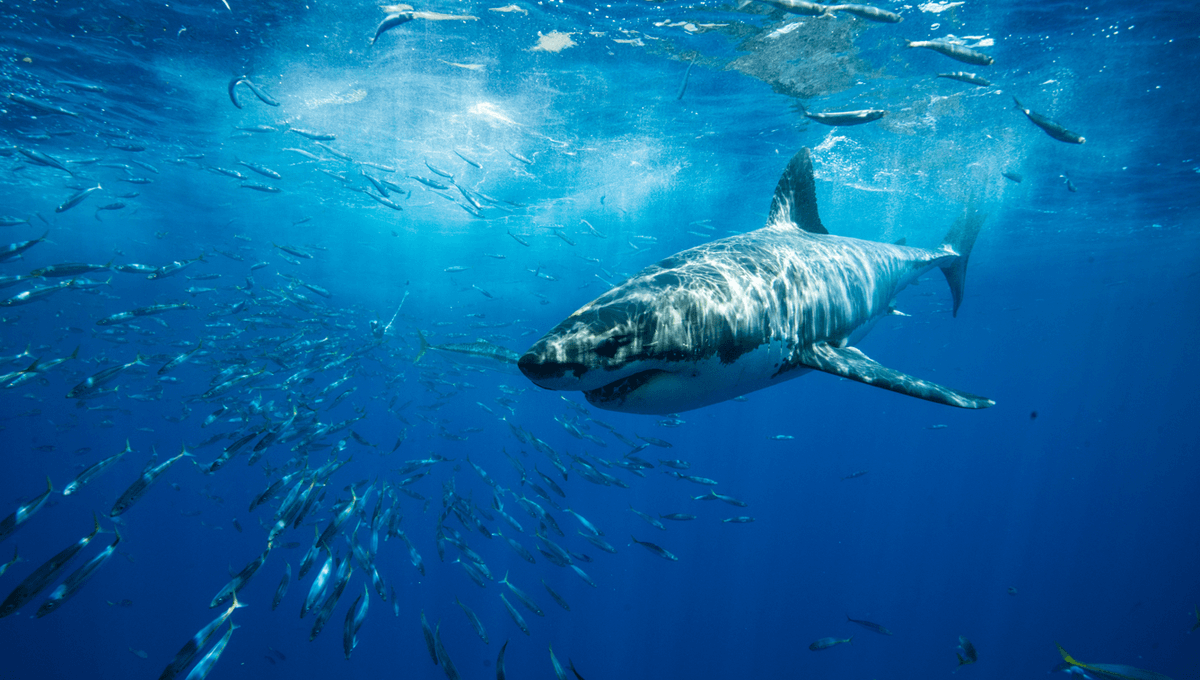
Great white sharks are some of the world’s toughest travelers, regularly seen traversing extreme routes around the world’s oceans. They don’t gently wander on their voyages either; the iconic species can complete some of the fastest transoceanic migrations ever seen by marine animals.
In the early 2000s, a great white shark swam approximately 20,000 kilometers (12,400 miles) from South Africa to Australia then back again within nine months. The first arm of this journey eastwards across the Indian Ocean included the fastest known transoceanic return migration among marine animals, according to a 2005 study about the feat.
Researchers at the Wildlife Conservation Society named her Nicole after Australian actress Nicole Kidman (who’s apparently a huge admirer of great white sharks).
On November 7, 2003, researchers attached an electronic tracker to her dorsal fin while in the waters of South Africa. After completing the first leg of the journey, the tag fell off near Exmouth Gulf in Western Australia and relayed the data to a satellite.
It revealed that she had swum from South Africa to Australia, around 11,100 kilometers ( 6,900 miles), in just 99 days – a record-breaking feat.
The researchers thought this would be the end of the story, but she was spotted again on August 20, 2004 – all the way back in South Africa.
“This is one of the most significant discoveries about white shark ecology and suggests we might have to rewrite the life history of this powerful fish,” Dr Ramón Bonfil, a researcher at the Wildlife Conservation Society and lead author of the study, said in a statement in 2005.
“More importantly, Nicole has shown us that separate populations of great white sharks may be more directly connected than previously thought, and that wide-ranging white sharks that are nationally protected in places such as South Africa and Australia are much more vulnerable to human fishing in the open oceans than we previously thought,” explained Bonfil.
Nicole’s electronic tag revealed several other fascinating insights into shark migration. On the trip from South Africa to Australia, she swam an average of 4.7 kilometers (2.9 miles) per hour, which rivals the speed of notoriously speedy tuna.
While most of the journey was made at the ocean’s surface, Nicole regularly plunged into the Indian Ocean basin at a depth of 980 meters (3,215 feet). In 2005, this was a record breaker for great whites, but scientists have since found they can dive as deep as 1,128 meters (3,700 feet).
Great whites are undoubtedly among the greatest seafarers, but other animals complete much longer migrations via air travel. Arctic Tern, a medium-sized seabird with a super-streamlined body, travels a monumental 96,000 kilometers (60,000 miles) round trip from the Arctic and sub-Arctic regions of Europe to Antarctica each year.
Source Link: How Long Does It Take For A Great White Shark To Cross An Ocean?